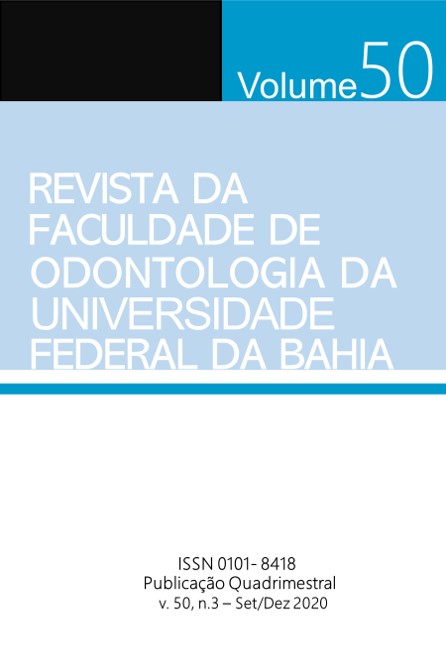MOLDAGEM DIGITAL EM PRÓTESE DENTÁRIA DIGITAL IMPRESSIONS IN PROSTHODONTICS
DOI:
https://doi.org/10.9771/revfo.v50i3.43112Palavras-chave:
Prótese Dentária, Desenho Assistido Por Computador, Restauração Dentária Permanente, Dental prosthesis, Computer-Aided Design, Dental restoration, permanent.Resumo
O ato de moldar é uma prática comum nos consultórios, no entanto, com
o avanço na área odontológica e na busca pela modernização para promover
conforto ao paciente e agilidade nos tratamentos, surgiram no início
dos anos 80, os modelos digitais. Com os avanços tecnológicos, os
processos de moldagem e obtenção de modelo digital, como também,
a produção da peça protética, são feitos por meio do sistema CAD/CAM
(Computer Aided Design/ Computer Aided Manufacturing) otimizando
a qualidade e tempo das reabilitações orais. Assim, o objetivo desse trabalho
foi apresentar uma revisão de literatura sobre a moldagem digital
em prótese dentária, suas indicações, vantagens, desvantagens e principais
sistemas digitais disponíveis. Foi realizada uma busca nos periódicos
da CAPES, Pubmed e Bireme com as palavras-chaves “Prótese Dentária”,
“Desenho Assistido Por Computador” e “Restauração Dentária Permanente”
e utilizados artigos no período de 2005 a 2020. A moldagem digital
fornece resultados similares às técnicas de impressão convencionais
e atende aos requisitos de precisão para o processo de transferência de
informações da boca do paciente para o laboratório de prótese dentária.
Além disso, o conforto do paciente e a agilidade no tratamento são
aspectos positivos que agregam valor à essa tecnologia. Existem muitos
sistemas digitais disponíveis atualmente na área odontológica, cabe ao
cirurgião-dentista e ao laboratório de prótese escolher qual se adequa
melhor à sua rotina.
The act of impression is a common practice in dentistry, however, with
the advances in the dental field and the search for modernization in order
to promote patient comfort and agility in treatments, digital models
emerged in the early 1980s. With technological advances, the processes
of impression and obtaining a digital model, as well as the fabrication of
prosthetic parts, are performed by CAD / CAM system, optimizing the
quality and time of oral rehabilitations. Thus, the aim of this study was
to present a literature review on digital impression in dental prosthesis,
its indications, advantages, disadvantages and main available digital systems.
A search was conducted in CAPES, Pubmed and Bireme journals
with the keywords “Dental Prosthesis”, “Computer Assisted Design” and
“Permanent Dental Restoration” and the period for the studies used was
from 2005 to 2020. Digital impressions provides similar results to conventional
techniques and meets the precision requirements for the process of
transferring information from the patient’s mouth to the dental laboratory.
In addition, patient comfort and agility in treatment are positive aspects
that add value to this technology. There are many digital systems currently
available in the dental field, it is up to the dentist and the prosthesis laboratory
to choose which one best suits your routine.
Downloads
Downloads
Publicado
Como Citar
Edição
Seção
Licença
Copyright (c) 2021 Revista da Faculdade de Odontologia da UFBA

Este trabalho está licenciado sob uma licença Creative Commons Attribution-NonCommercial 4.0 International License.

